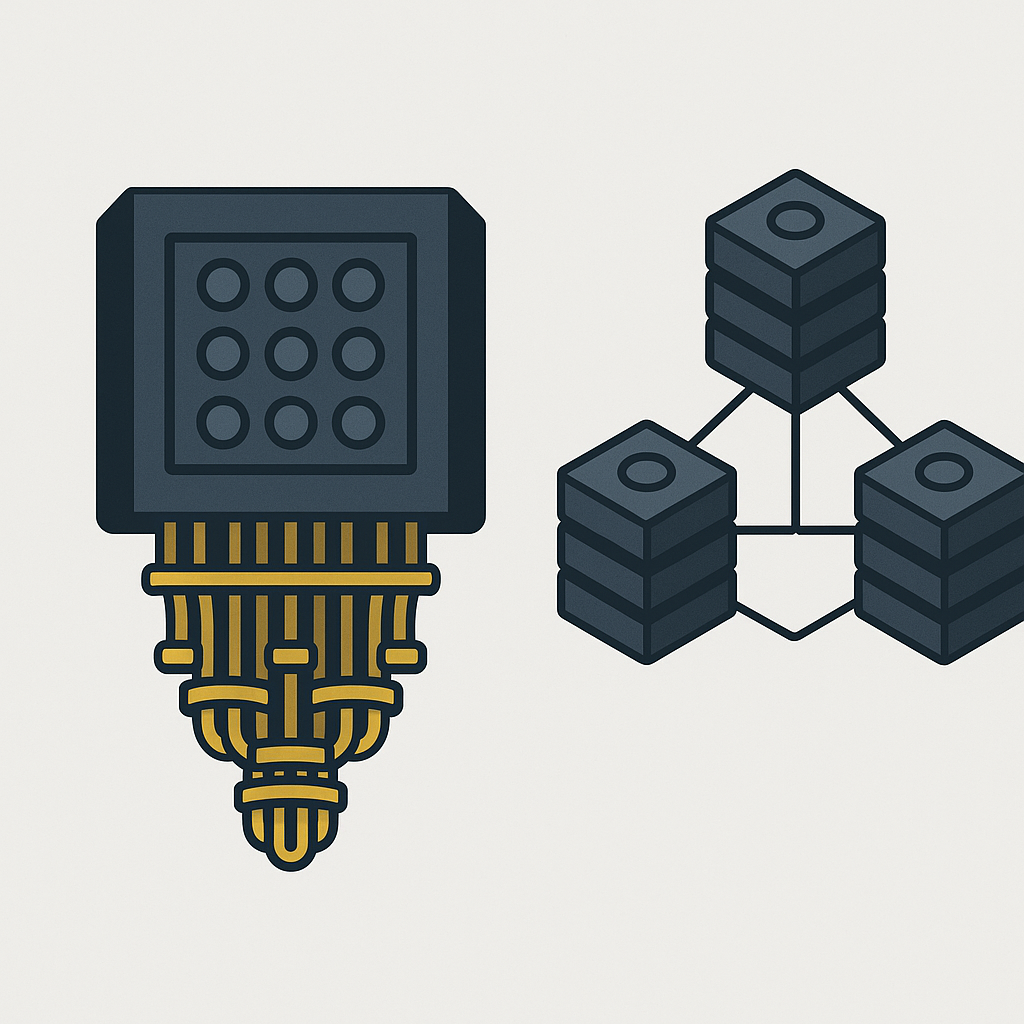Explaining how blockchain networks are preparing to defend against quantum attacks
🧠 1. The Quantum Threat Is Looming
Modern blockchains use cryptographic systems—like ECDSA and RSA—that rely on the difficulty of problems like integer factorization and elliptic curve discrete logarithms. Quantum computers running Shor’s algorithm could solve these in seconds, making current digital signatures completely insecure.
This isn’t sci-fi—researchers and standards bodies like NIST are warning that quantum-safe migration must happen now, not after the damage is done. Some experts expect cryptographically relevant quantum machines within the next decade..
The consensus? Prepare for Q-Day (the point when quantum computers break current cryptography), because retrofitting blockchains afterward is impractical at best.
🔐 2. Post‑Quantum Cryptography: The New Frontier
Post-quantum cryptography (PQC) comprises algorithms that resist both classical and quantum attacks. Studies and working groups like NIST have focused on lattice-based, hash-based, code-based, and multivariate cryptographic systems .
Notable NIST-approved PQC algorithms (2024):
- CRYSTALS-Kyber (Key Encapsulation Mechanism)
- CRYSTALS-Dilithium, FALCON, SPHINCS+ (Digital signatures)
These form the backbone of quantum-resistant digital signatures and key exchanges suitable for blockchain systems.
🧱 3. Blockchains Leading the Quantum-Proof Charge
🔄 Algorand: Already Underway
Algorand introduced FALCON-based state proofs in 2022—using post-quantum secure signatures to protect blockchain state history. It has also added FALCON verification capability within its virtual machine opcode, positioning itself for full ledger-wide post-quantum migration.
🛡️ Bitcoin: Preparing for a Quantum Transition
A proposed BIP (Bitcoin Improvement Proposal) aims to phase out vulnerable legacy ECDSA signatures by 2030 and integrate quantum-resistant schemes. If adopted, this could enable a smooth migration path to post-quantum signatures in future Bitcoin soft forks.
🌐 Quantum Resistant Ledger (QRL)
Launched in 2016, QRL prioritizes quantum-safe cryptography from day one—using hash-based signature schemes like XMSS to secure transactions. QRL is built entirely with post-quantum crypto, ensuring future-proof protection without retroactive changes.
🏗️ Ethereum & Smart Contract Chains
Several frameworks use libraries like liboqs to integrate PQC into OpenSSL and blockchain middleware. Ethereum and its derivatives are exploring signature scheme upgrades and post-quantum consensus components, though full mainnet deployment is still in early stages.
🔒 Nervos, Quantinuum, and Others
Research articles (e.g. by Nervos, Quantinuum, Deloitte) outline frameworks for layering quantum-resistant signatures into existing chains—often without critical redesign—by modularly swapping cryptographic primitives.
These plans typically span multiple years, following five-step frameworks: risk modeling, hybrid cryptography, gradual rollout, verification, and deprecation periods for outdated signatures .
⚙️ 4. How the Migration Works: Key Strategies
- Hybrid Signatures: Combine classical (e.g. ECDSA) with PQC (e.g. FALCON) so both must pass—safeguarding early integration stages.
- State Proofs: Back existing blockchain history with post-quantum signed checkpoints, preventing tampering even if older blocks are vulnerable.
- OpCode Support: Add smart contract or transaction-level PQ verification capabilities (like FALCON within Algorand’s VM) for full ecosystem readiness.
- BIP-style Upgrades: Formalize wallet and consensus changes through improvement proposals—allowing chains like Bitcoin to adopt new cryptography via soft forks .
- Library Adoption (liboqs): Provide integrated API support for PQC in widely used crypto-lib stacks, speeding up adoption across blockchains and services.
🕰️ 5. The Race Against Time
It’s not about if quantum computers break crypto—it’s when. Researchers warn of “harvest now, decrypt later” attacks: malicious actors could record current encrypted data and crack it in the future once quantum hardware matures.
Migration timelines matter. Studies suggest large financial systems need 5–10 years to fully adopt PQC solutions—so blockchains must begin integration now .
Government agencies like NIST and UK NCSC are already mandating quantum-safe cryptography by 2030–2035 for critical infrastructure—including digital finance and communications .
⚠️ 6. Challenges Ahead
🌐 Larger Keys & Signatures
Quantum-safe algorithms require bigger keys—e.g. McEliece keys can reach 1 MB—potentially increasing transaction and block sizes.
🧪 Performance & Deployment
Some PQC schemes are heavy on computation or storage. Efficient implementation is crucial for real-time blockchain networks.
🔄 Backwards Compatibility
Old nodes must still verify PQC-signed blocks. Hybrid systems and state proofs help bridge both eras.
🧑🔬 Algorithm Standards
As new PQC algorithms (post-NIST) emerge, chains need agility to pivot—making cryptographic agility a key design goal.
🔮 7. What This Means for Users
- Wallets and exchanges will eventually prompt users to upgrade keypairs.
- Software updates (e.g. Bitcoin clients, hardware wallets) will add post-quantum key support.
- Transactions during the transitional phase may use hybrid signatures for added safety.
- Eventually, all crypto assets will live in wallets signed with PQC, preventing future quantum exploits.
🏁 8. Final Thoughts: Quantum-Ready by Design
Quantum computing poses a real, irreversible risk to digital assets and blockchains. The response is powerful: robust cryptography, early adoption, and protocol agility.
Here’s a summary of where major chains stand:
- Algorand: Already using FALCON for history and moving to full PQC readiness
- Bitcoin: BIP in the works to migrate to quantum-resistant signatures by 2030
- QRL: Built quantum-safe from the start with XMSS signatures
- Ethereum & others: Exploring hybrid schemes, with library support and testnets underway
This is not hype—it’s a real, globally acknowledged shift. Blockchains securing with PQC now will be the ones that survive Q-Day intact.

